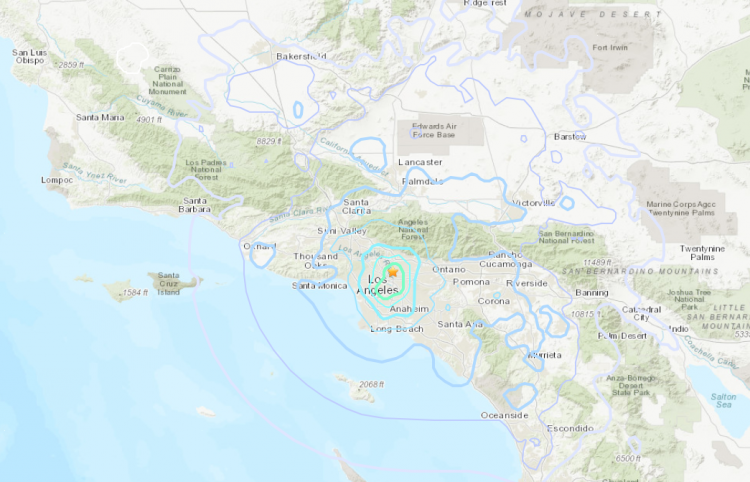Los Angeles experienced a magnitude 4.4 earthquake on Monday, shaking buildings and rattling nerves across Southern California. The U.S. Geological Survey (USGS) initially reported the quake at 12:20 p.m. PT with an intensity of 4.7, but it was later revised down to 4.4. The shallow quake, centered in Highland Park, was only 7.5 miles deep, contributing to its widespread impact across the densely populated region.
While no major injuries or structural damage were reported, the earthquake was felt from San Diego County to Simi Valley and as far east as Victorville and Redlands, according to the USGS. The Los Angeles Fire Department quickly activated its earthquake mode, dispatching crews from 106 fire stations to survey the area for potential damage. By 1:15 p.m., the department had concluded its checks, finding no significant issues.
Residents in the area described the quake as a sudden, violent jolt. Christine Chandler, a professor at the Martha Fuerst School of Nursing in Glendale, shared her experience with CNN affiliate KABC: "It was a jolt, and then the building just started to shake violently. It wasn't those nice roll-y ones we get. I had to hold on to the door jamb." The sentiment was echoed by others in the region, including Kyle Shearer of Highland Park, who said, "It was very, very scary. It's not my first, but it's probably the scariest I've had in a long time."
Despite the intensity of the quake, reports of damage were minimal. In Pasadena, a few miles from the epicenter, a broken water pipe at Pasadena City Hall led to a small flood on the sidewalk. Approximately 200 employees were evacuated from the building as firefighters worked to shut off the water. Pasadena Fire Department Deputy Chief Anthony James, who was out driving when the quake hit, said, "I was parked next to a bus. It felt like the whole ground was going away from under me. I thought, 'What was that?' And quickly figured it out."
James noted that one person was temporarily trapped in an elevator at Pasadena City Hall but was quickly freed by firefighters. The department also investigated a report of a broken gas line but had not confirmed if it was related to the earthquake.
Seismologist Dr. Lucy Jones provided insight into the geological context of the quake, explaining that the area around Highland Park is crisscrossed by a network of buried faults. "This area has a network of buried faults, so it's not something that shows up on the surface," Jones said. "The same network was involved in the 1987 Whittier Narrows quake, but exactly whether it's the same strand, because it's complicated and at depth, we'll never be able to say."
In the wake of the earthquake, Los Angeles County Supervisor Kathryn Barger reminded residents to stay prepared for future seismic events. "I want to remind L.A. County residents who are feeling jittery after today's quake to visit ready.lacounty.gov," she said. "You'll find helpful tips and information on how to prepare and be ready for earthquakes and any other hazard that can impact our County."
The earthquake follows other recent seismic activity in the region, including a magnitude 4.9 quake near Barstow on July 29 and a magnitude 5.2 temblor near Bakersfield just last Tuesday. While Monday's quake was not as strong, its shallow depth and proximity to Los Angeles made it a notable event.






